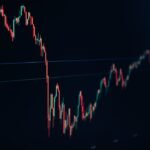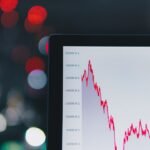The NFT market has been causing a stir in the realm of digital collectibles, offering a novel method for artists, creators and collectors to purchase, sell and trade unique digital assets. NFTs, or non-fungible tokens, are digital tokens that represent ownership of a specific item or piece of content, such as artwork, music, videos and even virtual real estate. Unlike cryptocurrencies such as Bitcoin or Ethereum, which are interchangeable and possess the same value, NFTs are unique and cannot be exchanged on a like-for-like basis.
The appeal of NFTs lies in their ability to provide proof of ownership and authenticity for digital assets, allowing creators to monetise their work and collectors to own rare and one-of-a-kind items in the digital space. This has created new opportunities for artists and content creators to reach a global audience and generate income from their digital creations. As the NFT market continues to grow, it is important for investors and collectors to understand the dynamics of this emerging market and how to navigate it effectively.
The NFT market is still relatively young and evolving, with new platforms, projects and trends emerging regularly. It is essential for anyone looking to become involved in the NFT space to stay informed about the latest developments and understand the potential risks and rewards associated with investing in digital collectibles. With a solid understanding of the NFT market, investors can make informed decisions and identify profitable opportunities in this exciting and dynamic space.
Identifying Profitable NFTs: How to Spot Potential Winners in the Market
Evaluating the Creator’s Reputation
One important consideration is the reputation and track record of the creator or artist behind the NFT. Established artists with a strong following and a history of successful sales are more likely to produce NFTs that hold their value and appreciate over time.
Scarcity, Uniqueness, and Cultural Significance
Another factor to consider is the scarcity and uniqueness of the NFT. Items that are one-of-a-kind or part of a limited series are generally more valuable than those that are widely available. Additionally, NFTs that have historical significance or cultural relevance may also command higher prices in the market.
Market Demand and Underlying Technology
It is also important to consider the demand for a particular type of NFT, as items that resonate with a large audience or have a strong community following are more likely to appreciate in value. Furthermore, investors should pay attention to the underlying technology and standards used to create and authenticate NFTs. NFTs built on reputable blockchain platforms with strong security features are generally more trustworthy and valuable.
By carefully evaluating these factors and staying informed about the latest trends and developments in the NFT market, investors can increase their chances of spotting potential winners and making profitable investments in digital collectibles.
Navigating the NFT Trading Platforms: Tips for Buying and Selling NFTs
Navigating the various NFT trading platforms can be a daunting task for newcomers to the market. With a growing number of platforms offering different features, fees, and user experiences, it is important for investors to carefully consider their options before buying or selling NFTs. One key consideration is the reputation and security of the platform, as investors should only use trusted and reputable platforms with a proven track record of successful transactions.
Another important factor to consider is the fees associated with buying and selling NFTs on a particular platform. Some platforms charge high fees for transactions, which can eat into profits for investors. It is important to carefully review the fee structure of each platform and consider how it may impact the overall profitability of trading NFTs.
Additionally, investors should consider the user interface and experience offered by different platforms, as a user-friendly interface can make it easier to navigate the buying and selling process. Furthermore, investors should pay attention to the liquidity of the platform, as platforms with higher liquidity offer more opportunities for buying and selling NFTs at competitive prices. It is also important to consider the community and support offered by each platform, as active communities and responsive customer support can provide valuable resources and assistance for investors.
By carefully evaluating these factors and conducting thorough research on different platforms, investors can make informed decisions about where to buy and sell NFTs to maximise their profits in the market.
Timing the Market: Strategies for Maximising Profits in NFT Trading
Timing the market is a crucial aspect of maximising profits in NFT trading, as prices for digital collectibles can fluctuate rapidly based on demand, trends, and market sentiment. One strategy for timing the market is to closely monitor trends and developments in the NFT space, as this can provide valuable insights into potential buying and selling opportunities. By staying informed about new projects, collaborations, and events in the NFT market, investors can identify trends early and position themselves to capitalise on emerging opportunities.
Another strategy for timing the market is to consider macroeconomic factors that may impact the value of NFTs. For example, changes in cryptocurrency prices, regulatory developments, or broader economic trends can influence investor sentiment and demand for digital collectibles. By staying informed about these factors and considering their potential impact on the NFT market, investors can make more informed decisions about when to buy or sell NFTs to maximise their profits.
Furthermore, investors should consider using technical analysis tools and indicators to identify potential entry and exit points in the market. By analysing price charts, volume data, and other technical indicators, investors can gain insights into market trends and patterns that may help them time their trades more effectively. It is also important for investors to set clear goals and risk management strategies when timing the market, as this can help them avoid emotional decision-making and stick to a disciplined approach to trading NFTs.
Diversifying Your NFT Portfolio: Spreading Risk and Maximising Returns
Diversifying your NFT portfolio is an important strategy for spreading risk and maximising returns in the market. By investing in a variety of different types of NFTs, investors can reduce their exposure to any single asset or project and increase their chances of owning profitable digital collectibles. One approach to diversification is to invest in NFTs across different categories, such as art, music, gaming, virtual real estate, and other digital assets.
This can help investors capture opportunities in multiple segments of the NFT market and reduce their reliance on any single category. Another approach to diversification is to invest in NFTs across different blockchain platforms or ecosystems. By spreading investments across multiple platforms like Ethereum, Binance Smart Chain, or Flow, investors can reduce their exposure to any single blockchain network and benefit from diverse opportunities in the broader NFT space.
Additionally, investors should consider diversifying across different creators or artists, as this can provide exposure to unique styles and audiences that may offer profitable opportunities in the market. Furthermore, investors should consider diversifying their holdings across different time horizons, with a mix of short-term speculative trades and long-term investment positions. This can help balance risk and reward in a portfolio by capturing both immediate profit opportunities and potential long-term appreciation in value.
By carefully diversifying their NFT holdings across various dimensions, investors can build a resilient portfolio that is better positioned to weather market volatility and maximise returns over time.
Long-term vs Short-term NFT Investing: Finding the Right Strategy for You
When it comes to NFT investing, there are different strategies for approaching the market based on long-term or short-term perspectives. Long-term investing involves holding onto NFT assets for an extended period with the expectation that they will appreciate in value over time. This approach requires patience and a belief in the long-term potential of digital collectibles as an asset class.
Long-term investors may focus on acquiring high-quality NFTs with strong fundamentals and holding onto them through market cycles to capture potential long-term gains. On the other hand, short-term investing involves buying and selling NFT assets within a shorter time frame to capture quick profits from market fluctuations. This approach requires active trading and a focus on identifying short-term trends and opportunities in the market.
Short-term investors may engage in speculative trading strategies such as flipping newly minted NFTs or taking advantage of short-term price movements to generate quick returns on their investments. Ultimately, finding the right strategy for you depends on your investment goals, risk tolerance, and time horizon. Long-term investing may be suitable for investors who believe in the transformative potential of NFTs as a new asset class and are willing to hold onto their investments through market volatility.
Short-term investing may be suitable for investors who are comfortable with active trading and want to take advantage of short-term profit opportunities in the dynamic NFT market. By carefully considering these factors and aligning your investment strategy with your personal preferences and goals, you can find the right approach to NFT investing that suits your individual needs.
Staying Informed: Keeping Up with Trends and Developments in the NFT Market
Staying informed about trends and developments in the NFT market is essential for anyone looking to succeed in this dynamic space. With new projects, collaborations, events, and technological advancements constantly shaping the landscape of digital collectibles, it is important for investors to stay up-to-date with the latest news and insights from the industry. One way to stay informed is by following reputable sources of information such as industry publications, news websites, social media channels, forums, and communities dedicated to NFTs.
Additionally, attending industry events such as conferences, webinars, meetups, and workshops can provide valuable opportunities to network with industry professionals, learn from experts, and gain insights into emerging trends in the NFT space. Engaging with other members of the community through online forums or social media groups can also provide valuable perspectives on market trends and potential investment opportunities. By actively participating in industry discussions and staying connected with other members of the community, investors can gain valuable insights into emerging trends and developments that may impact their investment decisions.
Furthermore, staying informed about regulatory developments and legal considerations related to NFTs is important for navigating potential risks in the market. As governments around the world continue to develop regulations around digital assets, it is important for investors to stay informed about changes that may impact their ability to buy, sell, or trade NFTs. By staying informed about these factors and actively engaging with industry news sources and communities, investors can position themselves to make more informed decisions about their investments in the fast-paced world of digital collectibles.
In conclusion, understanding the dynamics of the NFT market is essential for anyone looking to invest in digital collectibles effectively. By carefully evaluating factors such as creator reputation, scarcity, demand, technology standards, platform selection, timing strategies, diversification approaches, investment horizons, and staying informed about industry trends, investors can increase their chances of success in this exciting space. With a disciplined approach to navigating the complexities of the NFT market, investors can position themselves to capitalise on profitable opportunities while managing risks effectively.
As the NFT market continues to evolve at a rapid pace, staying informed about emerging trends and developments will be crucial for making informed investment decisions in this dynamic space.












